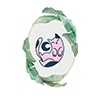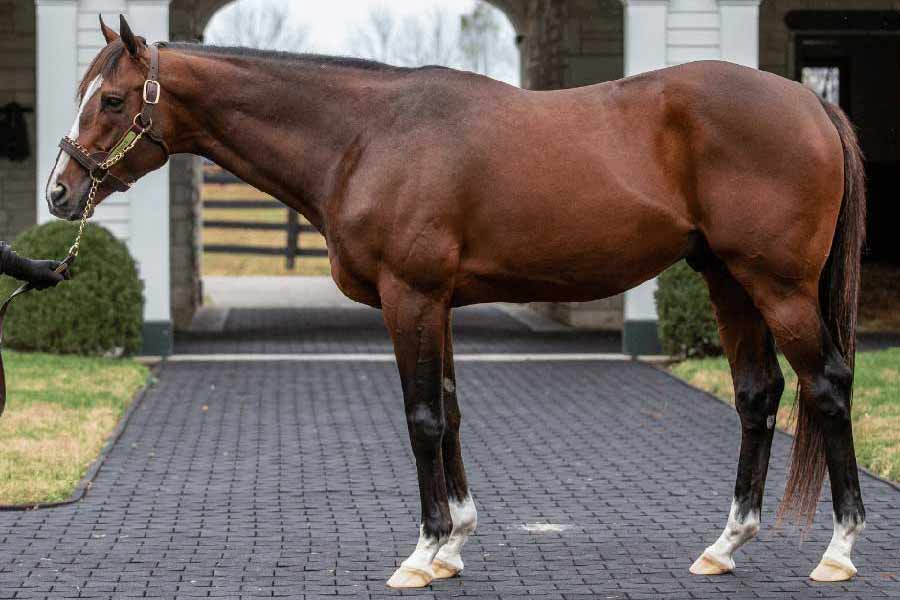Hello, fellow pet enthusiasts! Today, we embark on an exciting journey into the world of Thoroughbred horses. These magnificent horses have captured the hearts of many. Whether you are a seasoned equestrian or just starting your journey with these majestic beings, this guide aims to provide a comprehensive overview of Thoroughbred horses, shedding light on their history, characteristics, and why they are called “Thoroughbred.” By exploring their origins, physical attributes, and what makes them stand out from other horse breeds, we’ll equip you with a deeper understanding and appreciation for these amazing animals. So, saddle up to unravel the mystique of Thoroughbred horses!
Thoroughbred Horses- A Complete Guide
History and Origin
Thoroughbred horses trace their roots back to 17th-century England, where they were selectively bred for speed and stamina. This careful selection process has made the Thoroughbred one of the most popular breeds in horse racing and equestrian sport.
The breed’s foundation sires, including the Darley Arabian, the Byerley Turk, and the Godolphin Arabian, are legendary figures in Thoroughbred history. These horses when crossed with local mares, created a lineage known for its exceptional racing abilities.
Size, Height, Weight
Thoroughbreds are famous for their exceptional athletic build and striking elegance. On average, they stand between 15 to 17 hands, which is equivalent to 5 to 6 feet, measured from the ground to the withers. Their weight can range from 900 to 1,200 pounds, depending on their age, gender, and other factors. The distinctive physical characteristics of thoroughbreds, such as a long and slender physique, elongated legs, and a deep chest, for example, contribute to their incredible speed and agility on the racetrack.
Color and Markings of Thoroughbred Horses
Thoroughbreds come in a variety of coat colors, with bay and chestnut being the most common. However, apart from these two, you can also find them in other colors like gray, black, and occasionally, roan. While solid colors are prevalent, some Thoroughbreds boast distinctive markings such as stars, snips, and socks, adding to their unique charm.
Characteristics and Behavior
Thoroughbreds are a breed of horse that is a symbol of high energy and spirited nature. These horses are intelligent, agile, and have a strong desire to perform, which makes them ideal for different equestrian disciplines beyond racing, such as show jumping and dressage. They possess bold personalities. With proper training and socialization, thoroughbreds show their innate potential as versatile companions.
With their natural athleticism and intelligence, these horses are capable of achieving great things, but it’s equally important to provide them with the right environment, care, and guidance to help them thrive.
Diet and Nutrition
Thoroughbreds have specific dietary requirements to support their active lifestyle. To maintain their health and performance, providing them with a balanced and nutritious diet is vital. This includes a combination of quality forage, grains, and essential nutrients that meet their specific dietary requirements. Their diet should also be adjusted based on their age, activity level, and health condition.
In addition to a healthy diet, it is equally important to ensure proper hydration, especially for the racehorses that undergo rigorous training sessions. Adequate hydration is essential for preventing dehydration and other related health issues that can have a negative impact on their overall well-being.
Health Issues of Thoroughbred Horses
While Thoroughbreds are generally robust, they can be prone to certain health issues. Common concerns include joint problems, respiratory issues, and susceptibility to colic.
Joint problems can range from minor issues such as stiffness to serious conditions like osteoarthritis. Respiratory issues can be caused by allergies, infections, or environmental factors such as dust and poor ventilation. Colic, which is a digestive disorder, is a common ailment in horses and can be caused by various factors such as stress, dietary changes, or parasites.
To ensure the long and healthy life of Thoroughbred horses, provide them with proper care and attention. Regular veterinary check-ups, proper nutrition, and attentive care can help prevent health issues or detect them early.
In addition, regular exercise is also essential for their physical and mental well-being. With the right care, Thoroughbred horses can lead long, healthy, and happy lives.
Grooming Needs of Thoroughbred Horses
Proper grooming is a crucial aspect of caring for a Thoroughbred horse. It not only helps to maintain their overall appearance but also plays a significant role in their health and well-being. Therefore, following a grooming routine that includes regular brushing of the coat, mane and tail care, and cleaning of the hooves is important.
Brushing the coat helps to remove dirt, dust, and dead skin cells and stimulates blood flow to the skin, promoting a healthy and shiny coat. It can also help to prevent skin conditions and infections due to parasites and bacteria. Mane and tail care involves detangling the hair, removing any debris or knots, and applying conditioner to keep it soft and shiny.
Cleaning the hooves is equally important as it helps to prevent any infections or injuries caused by dirt, stones, or other debris that may get stuck in the hooves. Regular cleaning also helps to maintain healthy hooves and prevent any conditions such as thrush or cracks.
Moreover, grooming sessions provide an excellent opportunity to bond with your horse. Spending time grooming your horse can help to build trust and strengthen your relationship, allowing you to understand your horse’s needs better.
What Makes a Horse a Thoroughbred?
Thoroughbreds are defined by their pedigree, with strict criteria governing their registration. To be considered a Thoroughbred, a horse must be born from parents registered in the General Stud Book, the breed registry for Thoroughbreds.
Additionally, they must meet specific physical standards, including height, conformation, and coat color. Thoroughbred pedigrees are meticulously recorded, allowing breeders to trace lineage and select pairings for desired traits. The emphasis on maintaining pure bloodlines contributes to the breed’s consistency in athleticism and performance.
Why Is It Called a Thoroughbred?
The term “Thoroughbred” reflects the breed’s thorough lineage documentation and selective breeding practices. The word “thorough” conveys the meticulous attention paid to maintaining the purity of the breed. The stringent registration process and adherence to specific physical standards ensure that each Thoroughbred is a product of careful breeding, with a lineage dating back centuries.
Let’s Wrap it Up!
Thoroughbred horses stand as a testament to the beauty, athleticism, and rich history of the equestrian world. Whether you’re an avid fan of horse racing or simply admire these majestic creatures, understanding their origin, characteristics, and the reasons behind their name adds a layer of appreciation for these exceptional animals. As stewards of their well-being, let us celebrate the legacy of Thoroughbreds and ensure their continued vitality for generations to come.
Dr. Mark Roozen
Veterinarian | International Business Advisor
Dr. Mark Roozen is an experienced and dedicated International Veterinary Business Advisor with a passion for the veterinary industry. With a background in Veterinary Medicine from the University of Florida and an MBA from the University of Kentucky, Mark brings a unique blend of medical expertise and business acumen to the table. He built a state-of-the-art equine facility in Kentucky and led it to great success. His experience in clinic management and strategic leadership have honed his ability to identify growth opportunities and guide veterinary practitioners towards prosperity.
Mark’s love for animals and dedication to the veterinary field shines through in his work, making him a trusted advisor and partner to clients worldwide. He is committed to continuous learning and staying at the forefront of industry trends, always seeking innovative solutions to empower veterinary practices for long-term success.
